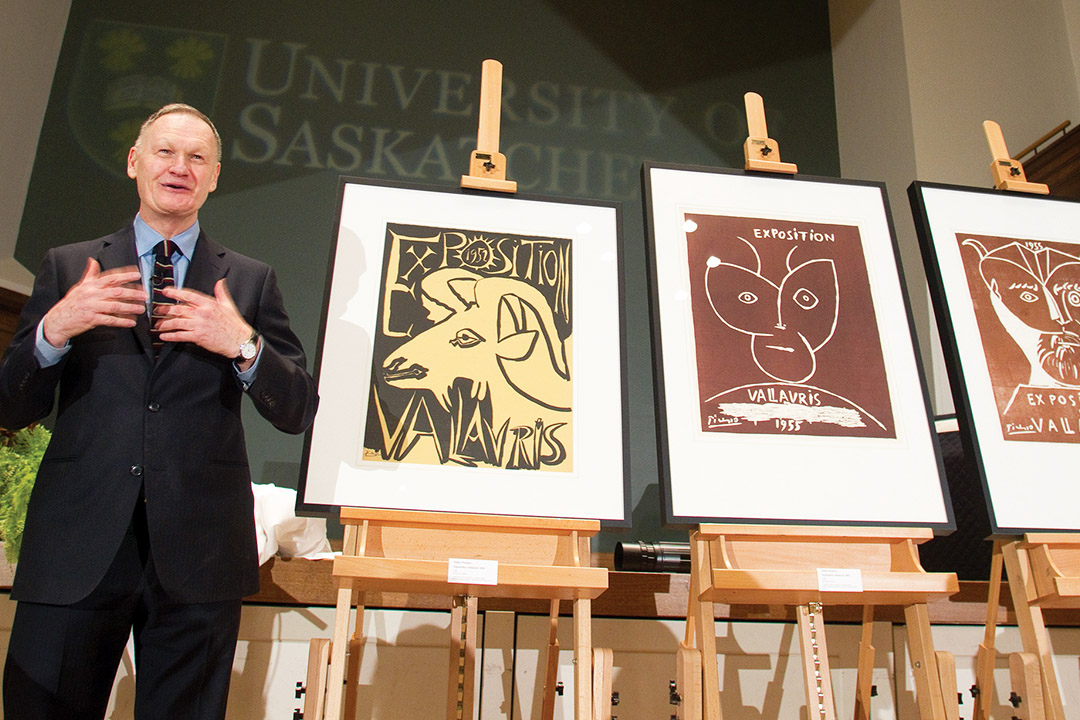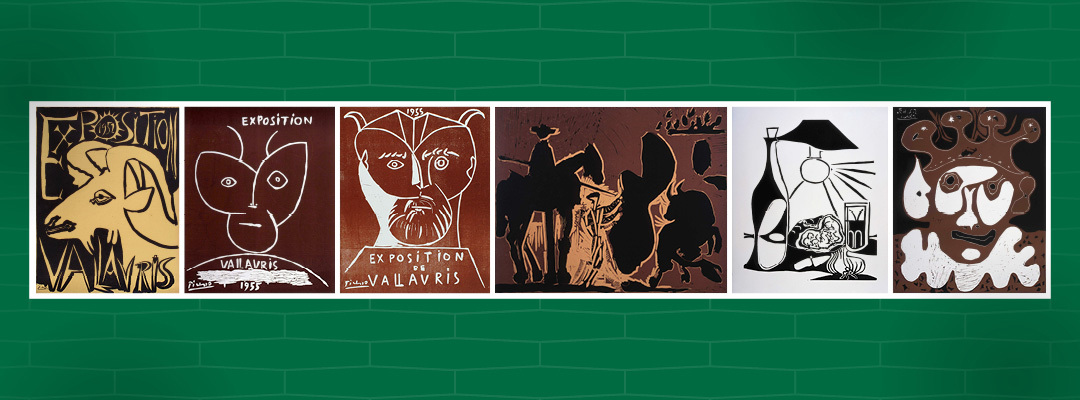
Uniquely USask: Prints by Picasso part of the USask story
The permanent art collection of the University of Saskatchewan (USask) holds works by great artists from countless cultures and art movements, but none are quite as iconic as the artist behind six large prints hanging in the President’s Residence.
By Chris Putnam“You can recognize the work pretty much immediately. And given that it is a very simple graphic process, it’s very interesting to think that this person that’s characterized as a modern master is immediately recognizable in these marks,” said jake moore, director of the USask Art Galleries and Collection and a faculty member in the Department of Art and Art History.
The linocut prints were created by Pablo Picasso in France between 1952 and 1965. They were donated to USask by Dr. Frederick Mulder (PhD) in 2012.
Although Picasso is best known for his paintings, he became an accomplished printmaker later in life. The six linocuts in the USask collection capture moments spanning his printmaking career.
By the time Picasso was making prints, “He’s kind of entered into a period of repose. He’s changed his subject matter—at that point it’s no longer political work,” said moore.
The prints include posters made by Picasso to advertise local events in Vallauris, France, the town where he settled in 1948. The posters are notable for showing how the artist “was invested in the community” and for reflecting a period when “advertising and art were becoming more and more well-aligned,” said moore.

Linocuts are not reproductions, but original pieces of art created through the direct work of an artist. To make his linocuts, Picasso carved images into blocks of linoleum and used them to apply ink to paper.
Hundreds of impressions were created from some of the blocks, but the vast majority have been lost. The prints are rare enough that, until Saskatoon’s Remai Modern acquired the world’s most complete collection of Picasso prints from Mulder later in 2012, the six pieces at USask were the largest institutional collection of Picasso linocuts in Canada.
The prints at USask are made far more meaningful by their connection to Mulder—a USask alumnus, honorary Doctor of Laws recipient and one of the world’s foremost dealers and experts in Picasso prints—moore said.
The years Picasso was making the prints in France were the same years Mulder spent growing up in Saskatchewan and completing his Bachelor of Arts in the College of Arts and Science. Mulder donated the linocuts in honour of six people at USask who had influenced and inspired him.
“It (shows) the kind of story-making that can come out of not only art-making, but art collection. It connects communities together,” said moore.

